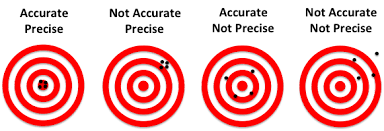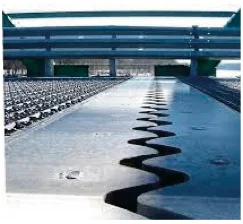Precision engineering operations require both accuracy and precision.
• Accuracy refers to the closeness of a measured value to a known value, such a
specific linear measurement.
• Precision refers to the closeness of two or more measurements to each other
—often called repeatability.
• The movement caused by thermal changes affects both the accuracy and precision
in any engineering operation.
Largest Source of Error
Thermal effects in a precision system represents the largest single source of systematic error and non-repeatability for nearly all ultra-precision manufacturing processes. As a result, minimizing and controlling thermal influences also offers the largest single source of improvement in a precision system and most often at a fraction of the cost of the overall system.
How Much Temperature Control Do I Need?
Most precision systems show dramatic performance improvement with temperature control 100 times better than ambient. However, the more error that you eliminate, the more accurate your manufacturing processes will be. So, in general, you want to eliminate as much error as possible in as many places as possible, and providing as much temperature control as possible is generally the easiest and most economical way to achieve improved accuracies.
Errors in a manufacturing process are cumulative. Therefore, error reduction in one area of your process will allow you to accommodate greater errors in other areas. For example, if you create greater accuracies by using precision temperature control, you may have more latitutde in part and machine setup.
Error Budgets
Error budgets are useful tools to categorize and predict the errors in precision manufacturing operations. Error budgeting is a methodology that allocate errors to components and processes of an instrument, and predicts the total error of the instrument's action.
When creating an error budget, precision determinism states that all error values—both systematic (straightness, squareness, positioning error, etc.) and non-systematic (thermal errors) are cumulative and additive. Therefore, eliminating as much error in any area of the process will contribute to the overall accuracy of the endeavor.
What Accuracy Improvements Can I Expect from Precision Temperature Control?
A Præcis Environment system can improve the accuracy of a manufacturing or metrology process by a factor of two up to ten. For example, if you have a well-designed machine operating in a poor environment (e.g., +/- 1.0 °C), you can expect a factor of ten accuracy improvement (+/- 0.01 °C).
The example below shows an interferometer measurement of a 200-mm long aluminum gauge block as it changed length in typical room temperature variation. A one-degree temperature change caused a 0.0046 mm change in length.





